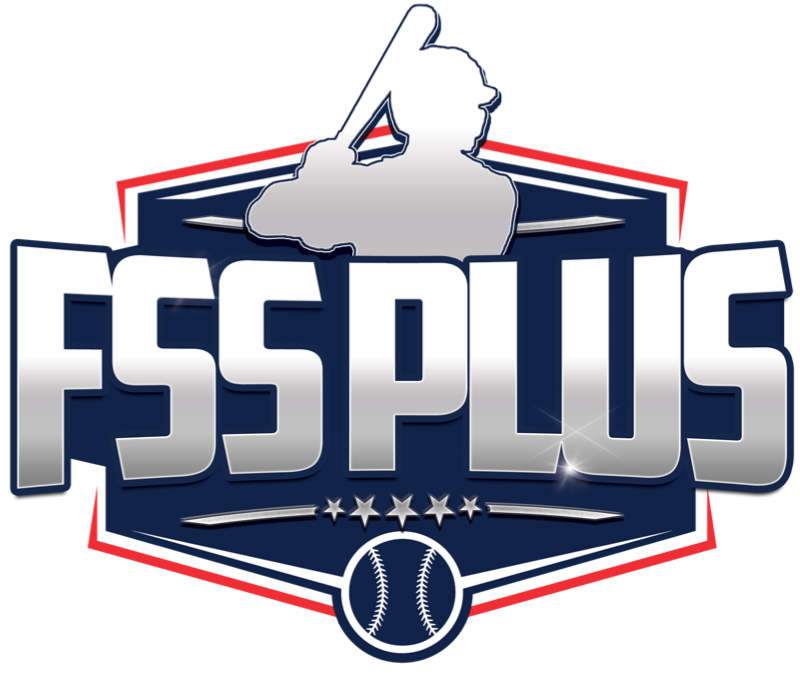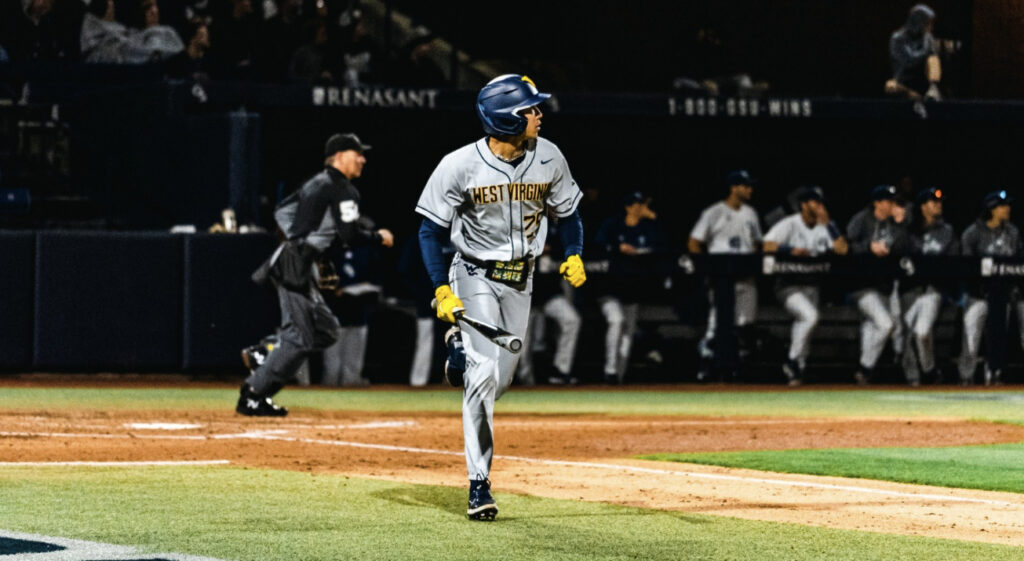Everyone scouts and evaluates talent differently. Everyone has a different emotional and mental model that helps dictate how the view position player prospects coming up through baseball. From this chair, in order to find success at the highest level, you have to be able to handle velocity. Pitch speeds only increase as you move up the ladder, and command of that velocity only improves as well.
Identifying which hitters in college baseball have the best track record of handling velocity, and handling it with authority is important. Teams should draft hitters that don’t chase outside of the zone, and when they earn a fastball in the strike zone, they pummel it. It’s a pillar of hitting and, from this chair, a prerequisite to future success.
For this exercise, we looked at every single hitter in college baseball and narrowed their outcomes down to swings on fastballs inside the strike zone with a velocity north of 92 mph. From there, identifying hitters that handled those pitches best and with the most authority was the priority. Anybody with a contact percentage north of 90 percent on 92+ mph fastballs in the zone, as well as an average exit velocity of 95 mph on those balls-in-play are highlighted. In order to qualify, players must have seen at least 40 pitches that fit those same parameters. These players not only have a track record of seeing and handling velocity in the zone, but doing damage with it as well.
Max Anderson, 3B — Nebraska
Anderson tops the charts in terms of exit velocity for this demographic, and made enough contact to qualify. With a mere 10-percent whiff rate and an average exit velocity north of 98 mph, Anderson not only handles velocity, but he does damage as well. His .412/.458/.791 slash over 53 games this season is indicative of an impact hitter who should go well in the draft. In fact, Anderson became the first player in Big Ten history to hit 15 home runs in a traditional conference play schedule this past weekend. There’s some chase in his game when it comes to spin, but he’s a fighter whose posted a strikeout-rate under 12-percent this season. There’s little doubt his offensive play will transition to pro ball.
Max Anderson takes the home run lead back.
That's his 18th of the year, edging Brice by one. pic.twitter.com/mqqFmuVU56
— Nebraska Baseball (@HuskerBaseball) May 6, 2023
On the defensive end, there’s a few more question marks. He’s a big solid-body third baseman who moves well for the position, though his hands and throwing motion are more of a work-in-progress. Anderson has seen improvements from his hands this year, though scouts see the arm action as being a little awkward and that plays down his arm strength. Even if he can’t hold down third base as a pro, he’s athletic enough to play a little bit of second base, and the bat is more than heavy enough to handle first base too.
Mac Horvath, 3B — North Carolina
Horvath was a big-time draft prospect for the 2022 MLB Draft, but elected to go back to school and get stronger, hoping to improve his draft stock for 2023. He’s done just that. A decorated defender at third base and in right field, Horvath should find plenty of avenues toward a big league role. His 90 percent contact-rate on swings at fastballs north of 92 mph in the strike zone is impressive, but his 97 mph average exit velocity on those swings is the real headline-grabber. That impact has generated a .312/.414/.711 slash on the season, including 21 homers.
Mac Horvath’s (@MacHorvath) numbers over the last 4 games jump off the page
Last 4 (Season)
wOBA: 0.746 (0.438)📈
xwOBA: 0.733 (0.410)📈
Hard-Hit%: 60 (47.4)📈
Barrel%: 40 (18.1)📈
Chase%: 10.5 (16.9)📉5 HR
9 BIP > 95 mphHit his furthest and 2nd furthest HRs of the season pic.twitter.com/Nf5bYAzRuy
— UNC Baseball Analytics (@UNCAnalytics) May 1, 2023
Horvath is a much more patient hitter than Anderson featuring elite chase rates and high walks. There’s a bit more swing-and-miss in his game than Anderson, that mostly coming against tough breaking balls in the strike zone. His swing can get a little long at times with his hands separating off the body a bit out in front, and that can ultimately affect Horvath’s ability to stay on-plane when he’s fooled in the zone. That said, he’s a strong kid with long limbs and some more projection in his frame. Defensively, scouts believe he can be above average at third base or in right field featuring a plus throwing arm at both spots. Horvath is likely to come off the board in the second or third round.
Colby Shade, OF — Oregon
Shade, another player who was a super-young draft-eligible prospect in the 2022 draft, has posted a gaudy season for the Ducks in 2023 slashing .326/.419/.519 with six homers and twelve stolen bases. He’s absolutely pummeled velocity this season, especially at the top-third of the zone. His 94% contact-rate on pitches north of 92 mph in the zone, and subsequent average exit velocity of near 96 mph has scouts intrigued.
B3 | 𝐏𝐨𝐰𝐞𝐫⚡@ColbyShade strikes back with a bomb to left field. Ducks up by one. #GoDucks
Arizona State 1
Oregon 2 pic.twitter.com/ZUVYpmn8gs— Oregon Duck Baseball (@OregonBaseball) April 29, 2023
Shade is going to be an interesting player to judge in this draft. He’s eligible for the second time, but his numbers have improved all over the place. Like Horvath, there’s some swing and miss here, but there’s good bit more chase in his game too. Shade really isn’t in a hurry to draw his walks, and his strikeout rate sits north of 20-percent. All that said, it’s hard to argue with the results when he gets his pitch to hit. It’s some of the most consistent impact on fastballs you can find in this class. Shade is an above average runner with solid instincts that could land his profile in centerfield in the short-term, though most like the profile in left field as a pro.
Braylen Wimmer, 2B/SS — South Carolina
What a ride it has been for Wimmer during his South Carolina career. An 18th-round selection by the Phillies in the 2022 MLB Draft, Wimmer elected to return to school and work to get bigger and stronger. He’s accomplished both of those things and has produced at a fantastic level this season. His .293/.403/.553 slash is indicative of the patient thumper that many have grown to label his game. At the time of publish, he also has 13 stolen bases matching his 2022 total. On the year, Wimmer has seen 74 pitches in the zone north of 92 mph. He’s posted a minuscule 7-percent whiff rates in those opportunities and his batted-balls have averaged north of 96 mph on those swings.
A Braylen 💣 gets the Gamecocks on the board! @braylenwimmer08
SECN+#Gamecocks | #ForeverToThee pic.twitter.com/DMskRJDuQH
— Gamecock Baseball (@GamecockBasebll) April 22, 2023
Wimmer is certainly going to have buyers in the 2023 draft. He’s played a great deal of second base and shortstop during his collegiate career, most foreseeing a future at the former, or possibly third base at the next level. He’s played some outfield as well, so that can’t be ruled out either. At 6-foot-4, 210 pounds, Wimmer is a physical specimen with an impactful frame and that athleticism to stay on the dirt. That can be incredibly difficult to find. There’s always been a high-degree of chase in his offensive profile, but he’s making more contact this season and really punishing mistakes when he’s provided them. He still has some development ahead, but Wimmer is a good bet to go earlier than where he was selected in 2022.
Chris Cannizzaro, OF — Virginia Tech
You’d be hard-pressed to find many more impactful upperclassmen than what Cannizzaro has meant to the Hokies in 2023. The 22-year-old Staten Island product has been a huge bat in the middle of the Virginia Tech lineup this season and he’s positioned himself to potentially hear his name called on day two in July. On the season, Cannizzaro is slashing .337/.395/.574 with ten homers and he’s added two stolen bases for good measure. Across 47 opportunities on pitches in the zone north of 92 mph, he’s posted a 93-percent contact rate and an average exit velocity of 96 mph on balls in play.
𝘾𝙖𝙣𝙣𝙞𝙯𝙯𝙖𝙧𝙤 𝙬𝙞𝙩𝙝 𝙩𝙝𝙚 𝙇𝙊𝙒𝘿 𝙝𝙤𝙢𝙚 𝙧𝙪𝙣 🗣️
≫ @chriscann241 (𝟏𝟎𝐭𝐡 🔨)#Hokies 🦃⚾️ pic.twitter.com/e7jacRka7Q
— Virginia Tech Baseball (@HokiesBaseball) May 18, 2023
Cannizzaro is a talented corner outfielder with average sprint speeds, though he takes solid routes to the ball and makes the routine play with consistency. Like some others in this list, there’s a good deal of chase in his offensive game, and that may ultimately hold back his offensive ceiling. That said, Cannizzaro punches out far less than others on this list and posts ideal launch angles and big exit velocity figures to go along with it. If a team believes the chase rates can be muzzled a bit, he’s a good money-saving option on day two of the draft this year.
Landon Wallace, OF — West Virginia
Landon Wallace is one of the best kept secrets in college baseball this season and has done more than enough to warrant a top-five round selection in the 2023 MLB Draft. He’s seen 41 pitches in the strike zone north of 92 mph this season. His 93-percent contact rate and 95 mph average exit velocity on those swings both put in him select company. On the season, Wallace is slashing .322/.467/.582 with ten homers and 17 stolen bases.
What a way to extend a hit streak!
Landon Wallace with a no doubter 💣 pic.twitter.com/A57AkwBVTp
— Ryan Decker (@RyanDecker_) April 21, 2023
There aren’t a lot of red flags in Wallace’s profile. Defensively, he’s a solid average left fielder who takes very good routes to the baseball and has made some highlight reel plays on awkward sinking line drives hit right at him. It’s a fringy arm and average speed, so he’s unlikely to ever be truly plus out there. It’s easy to dream on his 6-foot-2-inch, 170-pound frame too. There’s more impact coming here, and it’s plain and evident when you watch him operate in the box. It’s long limbs with twitchy hips. This is going to be an impactful bat with 15 more pounds. He already walks a ton, and he’s kept his strikeout rate south of 20 percent too. Wallace still has some work to do in handling breaking balls in the strike zone, but this is what projection looks like and it’s the type of profile that should excite front office decision makers.
Here are some players who just missed qualifying under these parameters, but have still been awfully impressive on upper-tier velocity in the zone:
Jordan Thompson, LSU: 93% Contact%, 92 mph EV
Cooper Ingle, Clemson: 94% Contact%, 92 mph EV
Kristian Campbell, Georgia Tech: 95% Contact%, 92 mph EV
LuJames Groover III, NC State: 94% Contact%, 92 mph
Jay Harry, Penn State: 92% Contact%, 92 mph
Kyle Teel, Virginia: 92% Contact%, 91 mph
Brock Rodden, Wichita State: 92% Contact%, 91 mph
Chase Davis, Arizona: 90% Contact%, 90 Avg EV
- MLB Draft: Mock Draft 4.0 - July 12, 2025
- 2025 MLB Draft: Top 615 Prospects - July 9, 2025
- MLB Draft: Mock Draft 3.0 - June 27, 2025















